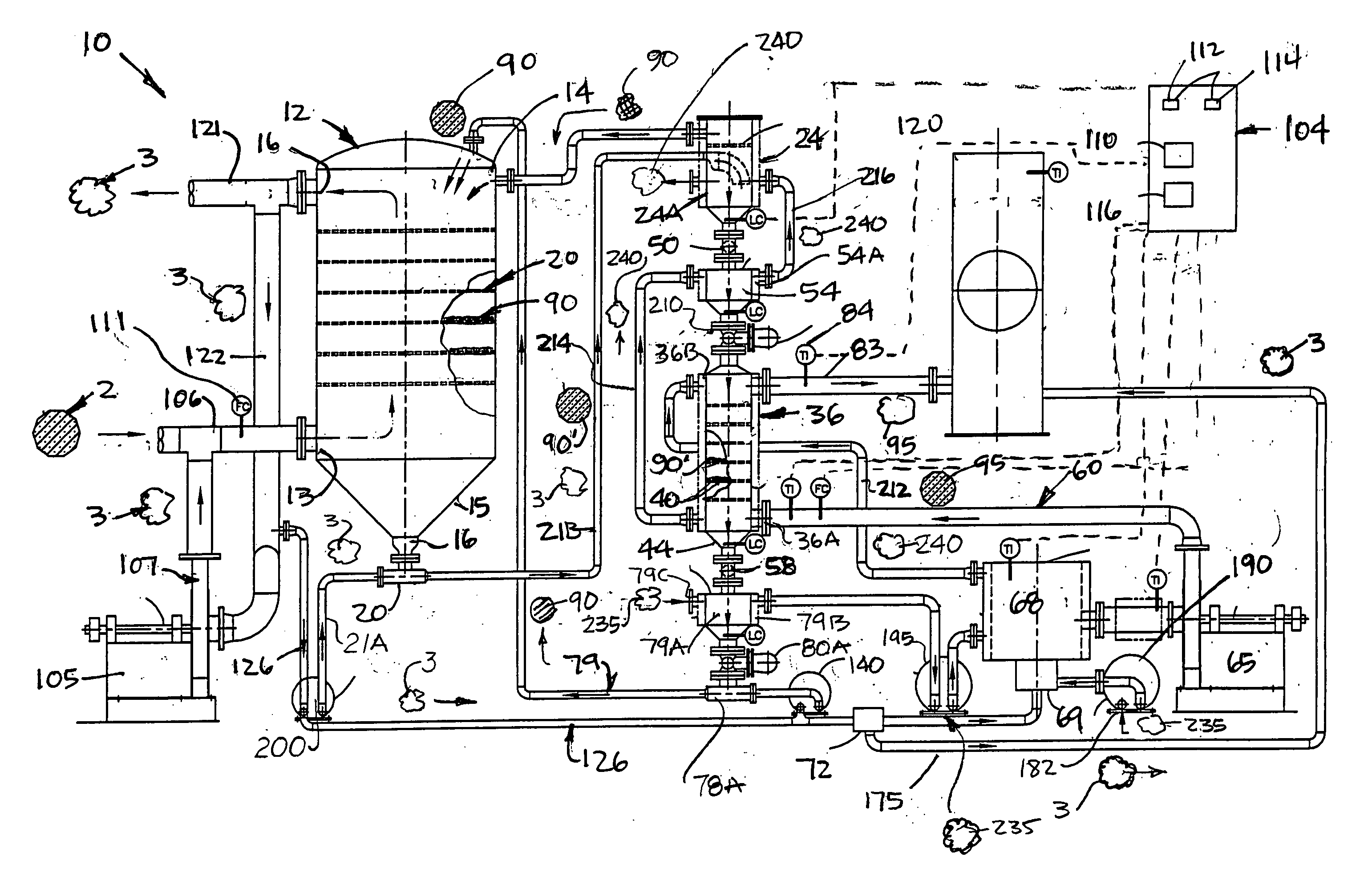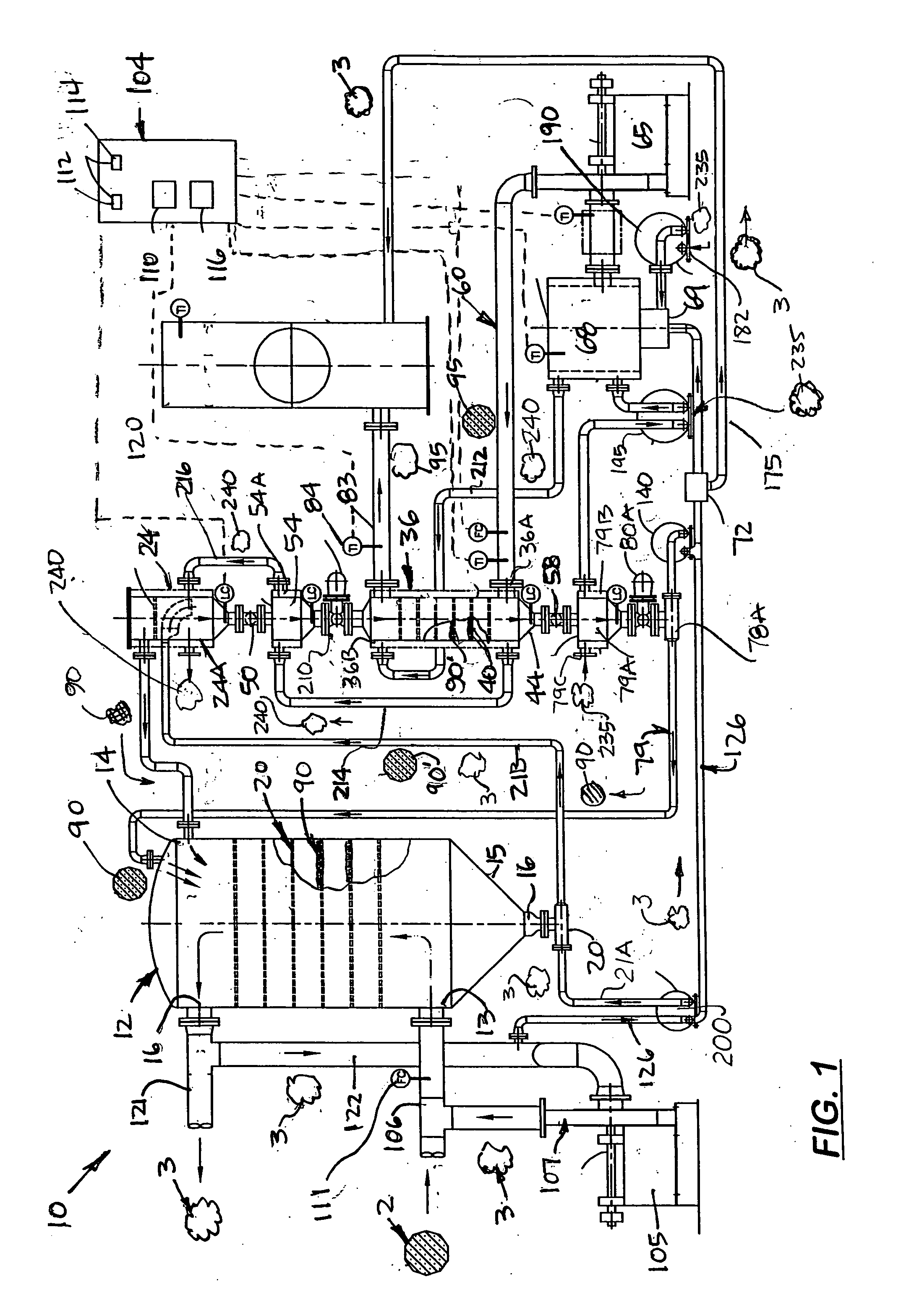Self-regulating bio-gas treatment system
- Summary
- Abstract
- Description
- Claims
- Application Information
AI Technical Summary
Benefits of technology
Problems solved by technology
Method used
Image
Examples
Embodiment Construction
)
[0013]Referring to FIG. 1 there is shown a self-regenerating bio-gas treatment system 10 that includes a closed and separate adsorber tank 12 and a desorber tank 36. Each tank 12, 36 includes at least four transversely aligned, stacked and evenly spaced apart, perforated trays 20, 40, respectively each capable being filled with pelletized carbon or silica gel material, hereinafter called transport media 90. During use, raw, contaminated bio-gas 2 enters the adsorber tank 12 through a lower inlet opening 13 at the bottom of the tank 12. Located at the top of the adbsorber tank 12 is an upper inlet opening 14 through which the transport media 90 is delivered. The transport media 90 has sufficient small particle size so that it fills, end eventual falls over the edges of the trays 20. Optional perforations are formed in the trays to allow bio-gas to seep through the layer of transport media deposited on the tray 20. The transport media 90 is continuously added to the absorber tank 12 ...
PUM
| Property | Measurement | Unit |
|---|---|---|
| Fraction | aaaaa | aaaaa |
Abstract
Description
Claims
Application Information
 Login to View More
Login to View More - R&D
- Intellectual Property
- Life Sciences
- Materials
- Tech Scout
- Unparalleled Data Quality
- Higher Quality Content
- 60% Fewer Hallucinations
Browse by: Latest US Patents, China's latest patents, Technical Efficacy Thesaurus, Application Domain, Technology Topic, Popular Technical Reports.
© 2025 PatSnap. All rights reserved.Legal|Privacy policy|Modern Slavery Act Transparency Statement|Sitemap|About US| Contact US: help@patsnap.com


